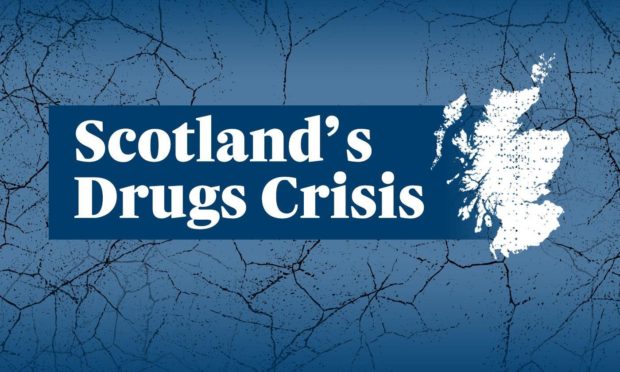Newly released figures have shown that the toll of drug-related deaths in Scotland are still rising. With 1,339 deaths recorded in 2020, an increase of 5.9%, up from 1,264 in 2019.
In 2002, the number of drug-related deaths in Scotland was higher than the peak of transport accident deaths. In 2017, the number surged past the peak number of annual suicides ever recorded.
In 2020, almost as many people in Scotland lost their lives to drugs than have ever died in one year due to alcohol-specific causes.
You can see the trend over time in your area in the chart below.
Does Dundee have the highest rate in Europe?
The number of drug deaths in Dundee fell for the first time since 2017 and in 2020 it had the third highest rate in Scotland.
The European Monitoring Centre for Drugs and Drug Addiction (EMCDDA) highlighted the Scottish rate as a concern in their May 2021 report on drug-related deaths and said “Mortality rates due to overdose are higher in Scotland than in the rest of the United Kingdom or in other European countries or the United States.”
While caution should always be urged when comparing death statistics across various countries as there are some differences in recording practices and noted issues with under-reporting in some countries, we took a look at the rates across Europe.
These rates are based on the latest available data for each country and were reported in the latest report by the European monitoring centre for drugs and drug addiction.
These statistics show that the Scottish rate is significantly higher than the rates of our European counterparts.
What are the problem drugs in my area?
We compiled the available data from the annual reports going back to 2006 to look at the regional trends over time. You can see this data below.
Most drug-related deaths in Scotland are associated with heroin, other opioids and benzodiazepines.
This pattern is seen in Tayside & Fife, where opiates continue to be a leading cause of death. However ‘street benzodiazepines’ continue to be a concern and were implicated in 79% of deaths in both Dundee and Perth and Kinross in 2020.
How are individuals dying?
The drug-related death statistics report on a few different official causes of death. The chart below shows the changes since 1996.
How big of a problem are ‘street benzos’?
Deaths caused by street benzodiazepines have increased significantly in the past few years.
‘Street’ benzos include any type of benzodiazepines which, unlike diazepam, are not prescribed in a medical setting. As unregulated copies of the drug type, ‘street’ benzos are more likely to vary widely in their potency and are not quality controlled.
Between 2000 and 2010 there had been only two deaths recorded in Scotland as a result of street benzos.
Between 2011 and 2020 this skyrocketed to 3,276 deaths, with the numbers each year continuously rising.
Are there differences across age-ranges?
The data in Scotland shows that over time, the people who lose their lives to drugs have gotten older. The chart below shows the average ages of individuals recorded in the report.
The effects of this trend can also be seen in the rates of death in each demographic. Between 2000 and 2010, the highest rate of deaths was seen in 25-34 year olds. This jumped a demographic in 2011 to the 35-44 year old demographic.
Are drug-related deaths more prevalent in areas more affected by poverty?
There appears to be a strong link between poverty and the drug death crisis. We analysed the Scottish Index of Multiple Deprivation (SIMD) data and compared it with the latest drug-related death rates.
